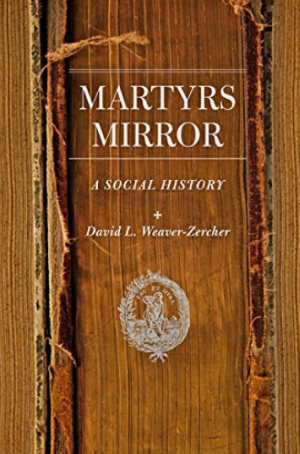Martyrs Mirror: a social history
This history of the 17th century Anabaptist martyr book raises significant issues for reflection
 Martyrs Mirror: a social history
Martyrs Mirror: a social history
by David L.Weaver-Zercher
John Hopkins University Press
ISBN 978-1-4214-1882-7 (hardback) or 1883-4 (electronic)
Reviewed by Stephen Copson
When Anabaptists emerged in Europe in the first quarter of the 16th century, they were treated as religious and political threats by the authorities whether in Lutheran, Reformed or Catholic controlled areas. They suffered persecution and more than 2,500 died in the first hundred years. This oppressive response created tightly-knit communities bound together by kinship, faith and shared values.
Stories of these martyrs were handed down and preserved in collections. The most influential of these was The Bloody Theatre or more commonly The Martyrs Mirror, published in 1660. It bore witness to the claim that the true church had ever been a persecuted church, and linked the Anabaptists directly to the early generations of Christians.
David Weaver-Zercher examines how these texts were used to strengthen believers in their faith, to illustrate the cost of religious dissent and to provide didactic examples for subsequent generations about how the community should live. He also explores how the stories could be nuanced in differing contexts, and instances this with the example of Dirk Willems - the Dutch Anabaptist who turned back to help a pursuer who had fallen through the ice, was captured and executed.
The author raises the question of what happened when the stories were told and re-told in the New World where groups had emigrated for a new life – as Mennonites, Hutterites, Amish. Here there was no persecution for the introverted communities with their traditions bound up with the witness stories but over time a re-examination was needed lest they became just old stories.
Equally as Anabaptist ideas begin to spread to other continents, what do the stories mean when repeated in Africa or Asia? It is perhaps this tension that has caused some contemporary Anabaptists to detach the historic witness from the present lived distinctives. Yet still the martyr stories remain – to inspire, to challenge and to provide a link of tradition and identity.
This is a book more for the scholar than the casual reader – it contains much bibliographical detail of the many editions of the text. And yet it does raise significant issues for reflection – how history should inform and not imprison, and how the past can nurture the present and help to shape the future.
Stephen Copson is a regional minister of the Central Baptist Association
Baptist Times, 24/02/2017